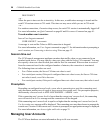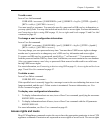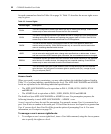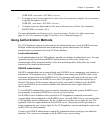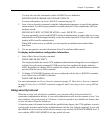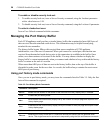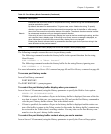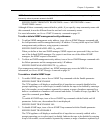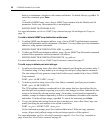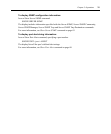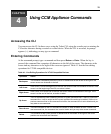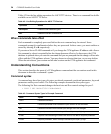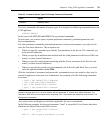
28 CCM4850 Installer/User Guide
SERVER CLI HISTORY=CLEAR|KEEP
• If Clear is specified, the port history buffer is cleared and all data is discarded at the end of
a session.
• If Keep is specified, the port history buffer’s content is retained at the end of a session.
To clear and discard all data in a port history buffer:
Issue a Clear command while you are in port history mode.
CLEAR
- or -
Issue a Server CLI command, indicating History=Clear.
SERVER CLI HISTORY=CLEAR
In this case, the port’s history buffer is cleared at the end of each device session.
Managing the CCM Appliance Using SNMP
The CCM console management appliance provides a set of commands that create and manage
SNMP structures for use by third party network management products. These commands cover the
following operations:
• Enabling and disabling SNMP UDP port 161 SNMP processing
• Defining read, write and trap community names
• Defining and deleting up to four SNMP management entity IP addresses
• Enabling and disabling SNMP traps
• Defining and deleting up to four trap destination IP addresses
• Defining, copying and deleting up to ten alert strings for each port
By default, SNMP is enabled but no traps are enabled and no trap destinations are defined.
To enable or disable SNMP processing:
1. To enable SNMP processing, issue a Server SNMP command with the Enable parameter. This
is the default setting.
SERVER SNMP ENABLE
2. To disable SNMP processing, issue a Server SNMP command with the Disable parameter.
SERVER SNMP DISABLE
For more information, see Server SNMP command on page 55.
To specify SNMP community names:
Issue a Server SNMP Community command, using the Readcomm, Writecomm and Trapcomm
parameters to specify community names.



